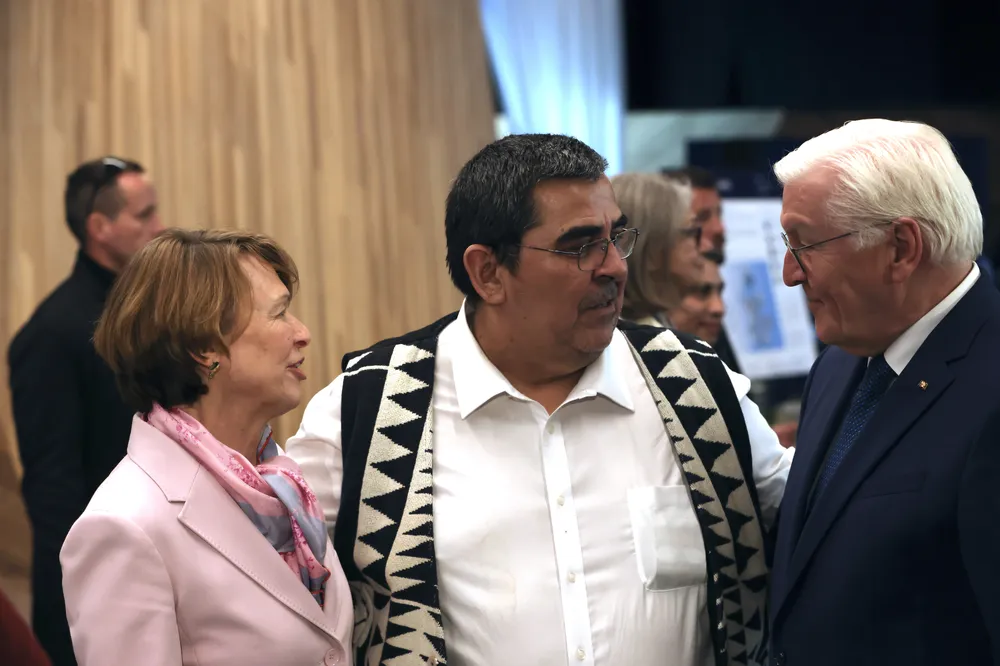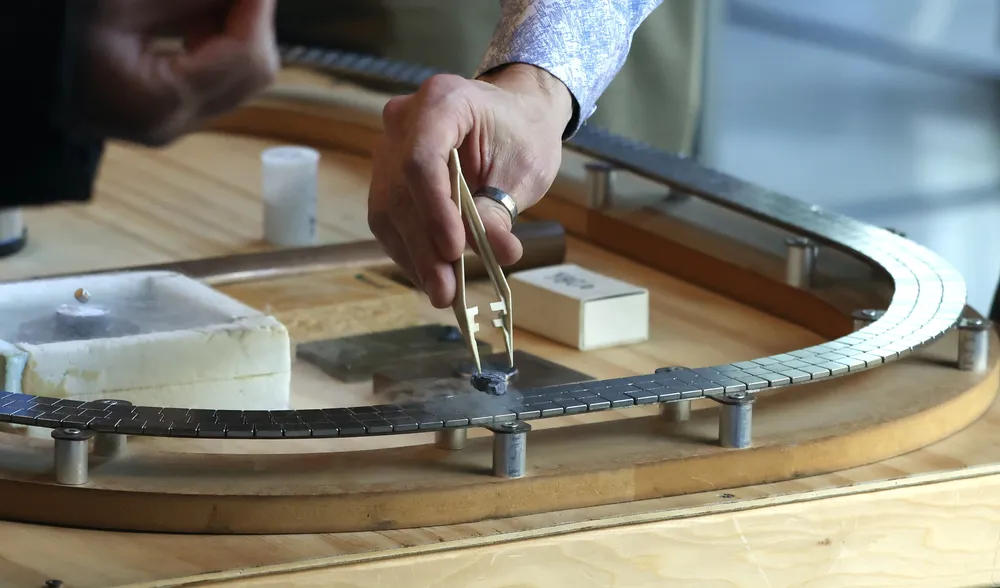Applied science research groups at UBC showed off their work during a visit from German President Frank-Walter Steinmeier last week.
Steinmeier was on a four-day visit to Canada, with a delegation including Germany’s Minister of Education and Research Bettina Stark-Watzinger and various business and science representatives.
The delegation was welcomed to campus by Interim President Deborah Buszard, Musqueam Chief Wayne Sparrow and many UBC research and applied science leaders — with a focus on international collaboration for clean energy.
Green hydrogen starts at home
Steinmeier’s visit started at the Smart Hydrogen Energy District (SHED), an upcoming renewable energy hub that provides solar and hydrogen power to campus while testing new innovations.
SHED, led by applied science Associate Dean, Research and Industrial Partnerships Walter Mérida, won’t be producing a high volume of hydrogen to export. Rather, it is intended to be a “living lab” — a hub to experiment with sustainable energy system design at a city scale with the goal of exporting its innovations elsewhere.
SHED comprises of a whole block between Wesbrook Mall and Thunderbird Boulevard, but the central hub where the visit took place is between Thunderbird Parkade and the skate park.
A few years ago, the block was a basketball court. Now, it's dominated by grey containers for hydrogen storage and production, alongside a hydrogen fuel pump sitting under a latticed wood and glass roof.
Germany has been urgently searching for renewable energy sources since the war in Ukraine put a spotlight on the country’s reliance on Russian fuel. Hydrogen can be used as a low-emission alternative to fossil fuels, but is energy-intensive to produce. Last summer, Canada signed an agreement to scale up hydrogen production enough to export “clean” hydrogen to Germany by 2025.
SHED is part of that effort. Bright new signs adorn the area explaining various components of the upcoming project, including solar panels on Thunderbird Parkade and new bi-directional electric car charging stations. While cars charge, they will work together as a giant battery in the SHED energy storage system.
“We are trying to demonstrate that it is not a zero sum game — we can have clean growth, and at the same time reduce our environmental impact,” Mérida said.
Sparrow highlighted the importance of clean energy as part of a broader Musqueam value of sustainability.
“Our job as elected leaders is to leave our community … as close as possible as they were here when we took control, and we live by those values,” he said. Sparrow gave Steinmeier a beaded blanket as a token of appreciation, and an art print of orcas to emphasize the importance of protecting the oceans.
Science on display
Steinmeier also toured an exhibition of applied science research at UBC, with a focus on UBC-German collaboration.
At one table, researchers from the Max Planck-UBC-UTokyo Centre for Quantum Materials pulled a nugget of Yttrium barium copper oxide (YBCO) out of a pool of freezing liquid nitrogen.
When cooled, YCBO exhibits superconducting properties — electrons can pass through it easily, but at the same time, it expels magnetic fields that could normally pass through it. This allows the metal to ‘levitate’ around a magnetic track.
Superconducting metals like YCBO can be used to transfer energy more efficiently in power cables and as magnets in MRI machines, but scientists are trying to create materials that don’t need to be cooled far below absolute zero to be superconductive.
Another project on display was UBC Orbit, a student engineering design team working on sending a satellite into space for real-time imaging that could be used to scope areas for disaster response.
“I found out about this team during [Imagine Day] … and they said they were going to send a satellite to space, and I was like holy crap — that’s insane, I really want to help with that,” said Kamryn Diehl, a science student and the Orbit team’s administrative lead.
“I really like this team because most of the people on it are engineers, but you don’t have to be,” she added.
Steinmeier said visiting the research exhibition left him optimistic.
“[It’s] very important that Germany and Canada are collaborating for all the ambition of making the world a better place … what we saw here … was the close collaboration between science institutions in Germany and Canada, so therefore I’m looking really encouraged to the future.”
— With files from Matthew Asuncion
Share this article
First online







